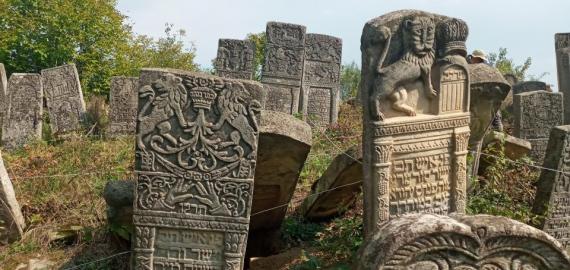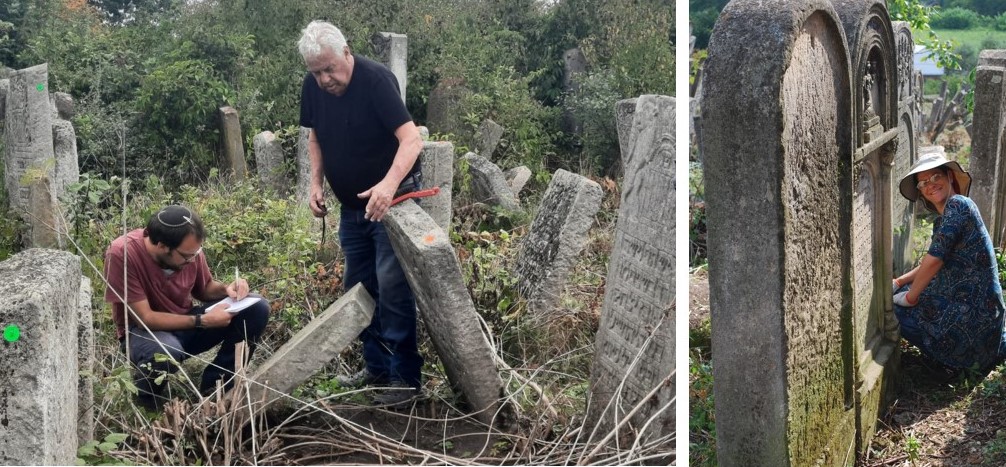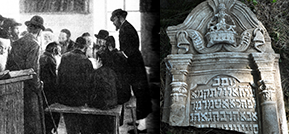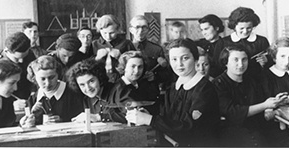
This year our organization turned to document the Jewish cemeteries in south Bukovina in Romania. This region together with North Bukovina, which is currently part of Ukraine, was part of the Principality of Moldova for decades. In 1775 Bukovina was annexed to the Habsburg Empire and integrated into its administrative system: at first as part of the Galicia district and from 1849 as a separate administrative unit. After the First World War and the fall of the Austro-Hungarian Empire Bukovina became part of the Romanian Kingdom. With the outbreak of the Second World War the northern part of Bukovina was conquered by the Soviet Union and new political borders were fixed dividing Bukovina into two parts to this day.
The organization’s delegation has previously worked in one of the most significant historical Jewish centres in North Bukovina – in the town Vvyzhnytsia, this time round we focused on the past of one of the main Jewish communities in South Bukovina, in the city Siret.
The first Jews in Siret probably settled there in the Middle Ages, but the growth of the community only started after its annexation by the Austrian Empire, with big immigration waves from the cities of Galicia. In the late 19th century, the Jewish population constituted more than 40% of the general population in the city. Only one of the 9 synagogues and community centers in the city is still standing, it was built in the 18th century and decorated later with spectacular wall paintings.
There are three adjacent Jewish cemeteries in Siret: the old cemetery which most probably operated between the 16th and 19th centuries,
 the second, on a hill with tombstones form the 30’s of the 19th century to the beginning of the 20th century, and the third at the foot of the hill which opened in the late 19 century in which the last Jews from the city were buried at the beginning of the current century.
the second, on a hill with tombstones form the 30’s of the 19th century to the beginning of the 20th century, and the third at the foot of the hill which opened in the late 19 century in which the last Jews from the city were buried at the beginning of the current century.
The organization’s 12th documentation delegation fully documented the first two cemeteries. The most ancient tombstone found in the old cemetery dates to 1740, meaning it is from the Moldovian period. Many tombstones in both cemeteries are especially beautiful: they are decorated with spectacular stone carvings of animals (lions, eagles, unicorns and more…), flowers and rich ornaments.

During the work which included pruning trees and thorny shrubs, removing weeds and cleaning tombstones, 1500 tombstones were documented and photographed.
The delegation consisted of 11 Israeli volunteers and two staff members – Dr Boris Haimovich and Dr Ilia Lurie. This year as in previous years, despite the ravages of war across the border in Ukraine, our regular partners – the Ukrainian community leaders Yitzhak Perelman from, Ivano - Frankivsk and Yitzhak Karasik from Slavuta – helped us with all the logistical and organizational matters, and we thank them from the bottom of our hearts.
All the delegation’s findings are accessible on our website: see Old Siret Jewish cemetery and New Siret Jewish cemetery







